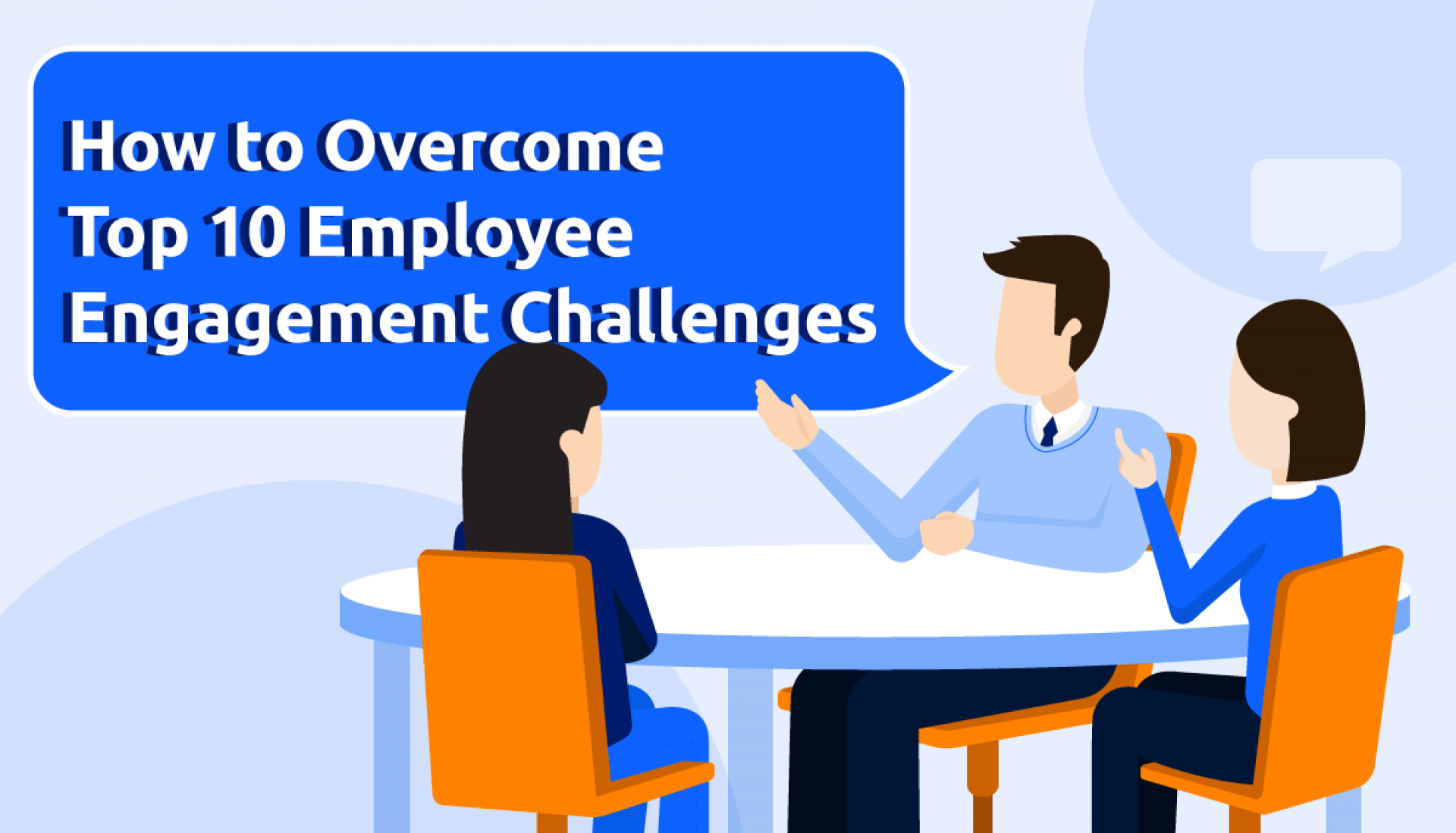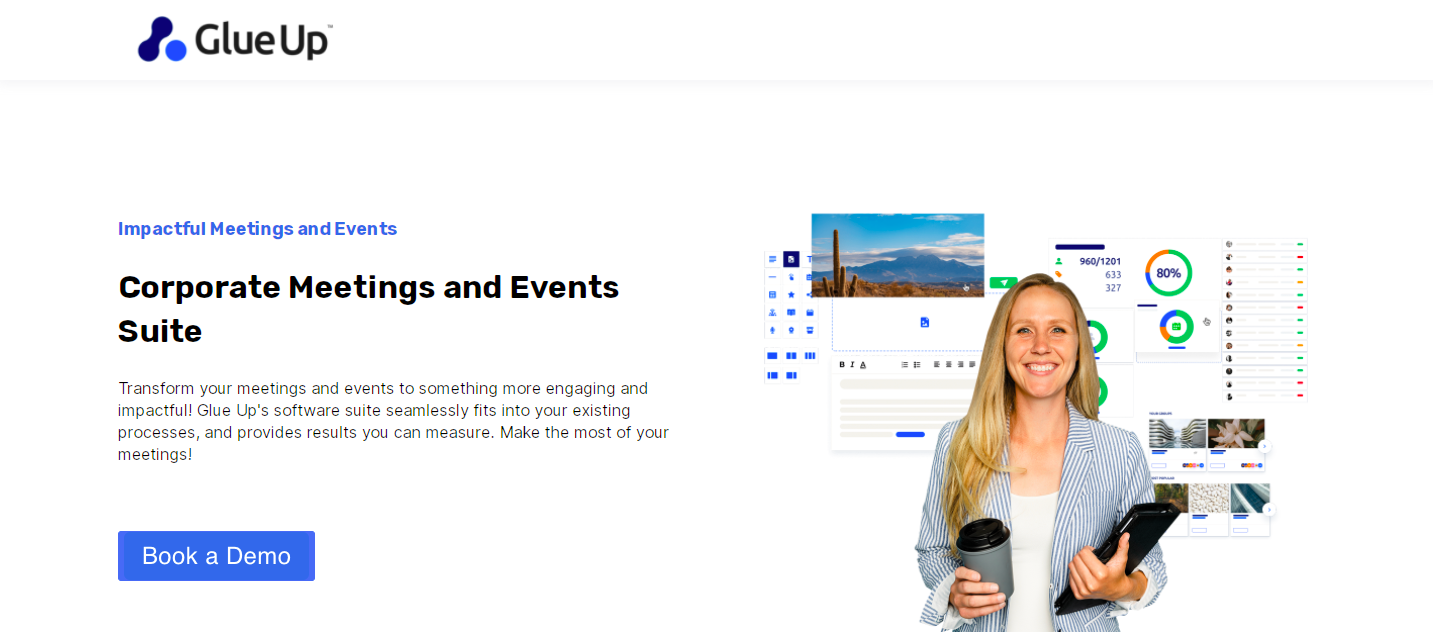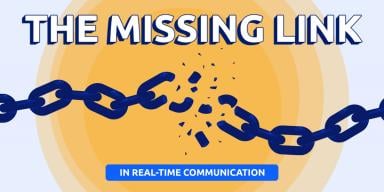
In today’s modern workplace, engaging employees is critical for retaining top talents, improving business productivity, and delivering higher profits.
Organizations invest in recruitment and training to establish a motivated workforce that has a range of benefits like decreased employee absenteeism, reduced turnover, and consistently good customer service.
Disengaged employees prove to be detrimental in the workplace. These individuals have low productivity and can be a poor cultural fit, especially when working with high performers. Leaders should recognize the signs of employee disengagement and ways to handle them as early as possible.
In this article, we list a few common employee engagement challenges and the ways to overcome them.
Quick Reads
- What is Employee Engagement [Definition]
- What Are the Two Types of Employee Engagement?
- Difference Between Employee Engagement and Job Satisfaction?
- Employee Engagement Surveys When Measuring Engagement
- How Glue Up Corporate and HR Suite Can Help in Overcoming Employee Engagement Challenges
What is Employee Engagement [Definition]
Employee engagement refers to the employee's involvement and enthusiasm in the workplace. It helps you gauge and manage their perspective on organizational culture.
There are several ways for you to check if they are actively engaged with their work or only looking for an opportunity to pass the time.
Ensure that your team building activities and human resources programs are suitable for creating positive business outcomes or should still be improved.
What Are the Two Types of Employee Engagement?
There are two terms you need to understand before you can boost engagement in the workplace. To put it simply, the target of motivation is where the difference lies.
1. Work Engagement
Work engagement is defined as "the employee's relationship with his or her work." In this aspect, the individual's role within the company is given much focus, their duties, and their commitment within the organizational hierarchy.
A positive work engagement is when individuals work happily and find meaning in their jobs. This is connected to their self-perception, which means that their role is part of who they are instead of a separate entity.
2. Organizational Engagement
Organizational engagement deals with “the emotional commitment the employee has to the business and its goals.” Productivity and motivation will increase when you improve employee engagement, and everyone is committed to working toward a common goal.
Difference Between Employee Engagement and Job Satisfaction?
Employee engagement occurs when there’s involvement among team members who are committed to achieving company goals. Engaged employees feel passionate about what they do and are motivated to show up to work every day to deliver business results.
A Gallup report revealed that while it’s on the rise, only 34% of employees in the United States and 13% worldwide said they are engaged at work. When organizations find ways to increase employee engagement, it can help innovate the business, boost its performance, and increase its competitive advantage.
On the other hand, job satisfaction relates to the optimistic view of a job based on what people focus on, which can be tied to employee attitude. If job satisfaction is high, it means that they are happy with their work.
There are different ways to measure job satisfaction. It can either be a simple survey with a circle level or a more detailed one that covers all facets of work to be more specific about how respondents feel about their work environment.
To gauge how employees feel about their work, asking good employee satisfaction questions is a must:
- How happy and satisfied are you at work?
- Do you feel valued for the work that you do?
- Is the company invested in the success of employees?
- Does the company offer opportunities for promotions and career development?
Employee Engagement Surveys When Measuring Engagement
After conducting an employee engagement survey, it is time to review the data for each business unit to analyze that can enable managers to make meaningful changes to build a more engaged workforce.
Managers should also meet with team members and communicate survey results. After this, they should create action plans that will address survey recommendations.
In addition, management may ask engagement objectives from each employee in their performance reviews to come up with engagement goals from the top, the middle, and the bottom.
After this, they should act on survey results right away and solve the root cause of negative feedback or comments. Organizations should perform the following:
- Work with focus groups to determine the significance of each item mentioned in the survey.
- Management should develop an effective action plan based on employee feedback.
- Group survey comments by theme and put them into categories while maintaining confidentiality.
- Management should inform employees that the survey is an organizational initiative.
- Build a survey committee that ensures the organization can move smoothly through a period of change.
What Are Employee Engagement Surveys
The primary purpose of an employee engagement survey is to measure employee engagement across the organization and evaluate the factors that contribute to it.
Measuring the key drivers of engagement enables you to determine whether your employees are engaged or disengaged.
In addition, you get the opportunity to keep employees satisfied and increase retention by capitalizing on opportunities.
Conducting employee engagement surveys can give you the following:
- Allowing employees to voice their concerns and offer suggestions.
- Monitor engagement levels and take necessary actions needed for change.
- Boost engagement levels to improve team success.
- Set a clear direction that can help your team achieve its potential.
Creating Engagement Surveys
Creating engagement surveys that can bring value to an organization takes time and effort. Like any other business initiative, it will require a detailed project plan. Set a clear end goal and use this initiative to determine your strengths in building your competitive edge in the industry.
Start by creating a baseline to track the progress of your employee engagement strategies. It would be best to ask employees for their honest feedback on how things are going for them.
Involve senior management in the process, especially during the planning phase, so that you can write down survey objectives together. This will help you reach a common goal by making sound decisions based on survey results.
List down high-priority objectives and set your focus to where the productivity goes down. Keep the survey short and sweet to gather important information only while avoiding putting so much pressure on employees.
To gain employee trust, being open and honest about how you plan to gather better data can help. Make sure they understand the survey process and its purpose.
Once you’ve gathered all the data and analyzed the results, make sure to share them with your employees. Conduct small meetings where the leaders can discuss the results with their direct reports to include them in the process.
What Are the Top 10 Employee Engagement Challenges and Their Practical Solutions
Barrier #1: No Workplace Alignment Essential to Effective Performance
Leaders know the value of having a good work culture and boosting employee engagement. However, some may find it challenging to keep employees happy and satisfied through engagement while sticking to their business goals.
It's crucial for managers to gather feedback to understand what’s happening in the business and increase productivity.
An effective way to get employee insights is simply collecting feedback and distributing a survey. To create a survey, you need to come up with a list of respondents first. Next, list down effective survey questions that can help you understand employees by learning more about them.
Solution #1: Get Senior Team Aligned

It is vital to strike the right balance between empowering a team while guiding members toward a unified strategy. To keep a team united toward a common goal, you need to ask the questions below:
- How do you plan to obtain input and give feedback?
- What programs are available that can help build a positive company culture?
- What employee recognition programs do you plan to create?
- Do leaders discuss the different ways to boost engagement?
- What are the things that can keep team members satisfied in their function?
- What should be improved in the current work culture?
- How do you use company values in day-to-day business operations?
Barrier #2: Poor Internal Communication
Internal communication challenges can be one of the main reasons employees are not satisfied with their jobs. Managers sometimes don't provide enough information or make abrupt changes that aren't communicated in advance to employees.
Solution #2: Make Two-Way Communication a Priority
Two-way communication should be in place that can allow employees to make suggestions, share their concerns, and talk about their day.
Next, all priorities should be communicated through different channels to maintain clarity and support the team. Employees should be aware of the value they bring to the organization and contribute to building workplace camaraderie.
Barrier #3: Leadership That Seems Unreal
Leaders should inspire employees more through communication to create transparency for greater engagement. It requires their total commitment to engage employees both individually and collectively actively.
Solution #3: Build Good Habits as Senior Leaders

Leaders should maintain a positive attitude by telling team members what to do. It is essential to demonstrate empathy as trust in leadership is the number one driver of engagement. Showing concern about the well-being of your employees can make you more trustworthy.
Listen attentively to employees and respond to show engagement. Ask questions to clarify important items for further discussion. Finding ways to understand your employees will increase their engagement with you by creating a more positive relationship with them.
Don’t forget to ask for feedback and find out how you are doing. Be open to suggestions and new ways of doing things to make positive changes in leadership.
Regular 1-on-1 meetings are a key component for successfully obtaining employee feedback. They give managers and their direct reports enough time to discuss projects, talk about career aspirations, evaluate performance, overcome challenges, and more. It also provides an opportunity for managers to get to know their employees outside of work.
A manager can begin by asking these three simple questions during a 1-on-1 session
- What makes you happy at work
- What drains your energy?
- What is your dream job 3 years from now?
Barrier #4: No Engagement Efforts From External Investors
Understanding and developing organizational culture is important to a business's success. In addition, getting support from other stakeholders, especially investors, should be part of the process.
Therefore, building strategies can help manage them well and work on meaningful projects despite all the challenges.
A study from Geneca revealed that only 23% of stakeholders and project managers are in agreement after the project has been delivered.
Working closely with the team to accomplish tasks is expected from a manager, but managing stakeholders and collaborating with senior leadership shouldn't be forgotten.
Solution #4: Make a Coherent Narrative in the Workplace
Engaged employees are crucial to business success. It would be best to communicate this to stakeholders while promoting your company's mission and vision.
It is a great motivational tool for enhancing reputation and building engagement, working on a common goal, and making a meaningful change in the organization. It can also build and establish stakeholder trust and loyalty.
A business case focused on higher engagement can guide leaders in performing a transparent decision-making process. Some of the metrics you can use are:
- Build a team of high caliber future leaders
- Improve employees' health and well-being
- Boost productivity in the workplace
- Deliver consistently good customer service
- Reduce absenteeism in the workplace
- Increase employee retention
- Establish good corporate reputation and credibility
Once you're prepared a list from the above items, create a narrative that focuses on the value of employee engagement.
Keep in mind that organizations should make work enjoyable for all. Therefore, it's vital to encourage your team to get more tasks done without pushing them too far.
Additionally, employee turnover costs are more expensive than you imagine. Replacing an employee can range from one-half to two times the employee's annual salary.
Barrier #5: Work With the Rest of the Organization
After team alignment and engaging direct reports, extending this initiative across the organization is necessary.
You might consider formal training, attending masterclasses, or investing large budgets for sustaining employee engagement.
However, the most critical factor to consider is the level of commitment from managers when adopting a mind shift. Managers should invest time in their people to create a positive relationship that enables them to work smarter and more efficiently.
Solution #5: Managers Stepping up to the Mark
You can address issues, initiate strategies, and build business objectives using different perspectives for better decisions when you have a strong leadership team. When there’s a robust support system, leaders do not carry the burden of doing everything themselves.
Managers should offer support to bring the skills, empower team members, and set organization goals. They should take advantage of their roles that hold a higher level of trust due to proximity with team members.
What’s more, enrolling in manager training improves communication skills, decision-making, and self-evaluation. Change should also be evident in the following:
- The role of team engagement from a manager’s perspective in achieving business outcomes.
- How they value their roles in creating workplace engagement.
- Understand the effects of several leadership challenges in employee engagement that can affect their efforts.
- Adjustments they are willing to do for the benefit of all in the organization.
Committed and dedicated managers are receptive to change and tend to enhance the skills needed for improvement.
Challenge 1: Communication Gap at Workplace

At this point that many companies have shifted to remote work, dealing with communication gaps can pose some challenges. When employees are not aware of the progress and changes in the organization, engagement can drop. Similarly, when they are not recognized for their work or cannot mingle well with others, they can lose motivation.
Tip:
Give priority to communication by encouraging managers and C-level executives to update employees regularly about projects, their progress, and organization performance.
A social intranet is a tool that can keep everyone updated, even remotely. This platform centralizes company information, allows employees to send their questions, and promotes collaboration to build a strong relationship between management and team members.
Organizing team meetings online and enabling chat features are just some of the ways employees can use to interact and stay engaged with projects they're working on that requires collaboration.
Challenge 2: Inefficient Use of People Analytics to Drive Business Results
People analytics drives value to an organization when looking to improve retention rate, optimize workforce planning, and boost employee engagement. By gathering and analyzing employee data, this tool can help you determine the cause of employee engagement problems. Lack of expertise in people analytics should be considered in determining whether organizations should perform it or not.
Tip:
To optimize training, mitigate turnover, and make better decisions, hiring the right people knowledgeable in people analytics is essential. An expert knows how to measure the metrics through qualitative experiences of staff members needed to create more effective employee involvement strategies.
Challenge 3: Lack of Support From Leaders
Top management should show commitment to improving employee engagement. They should use the most effective management style that motivates employees, increases productivity, and encourages everyone to stay.
No two-way communication between management levels or reluctance to adopt new strategies can disengage team members.
Tip:
Discussing employee engagement strategies is essential once you’ve identified the reasons for low employee engagement. Explain why employees should come first and how engagement can enhance brand reputation. Treat all employees equally and offer new opportunities for professional growth. They should feel a sense of belonging, and the leadership strategies should support the collective goals within the organization.
Challenge 4: Dealing With an Unhealthy Work Environment

A toxic work environment can ruin employee engagement. Some factors that can lead to a negative work environment are stress, burnout, and poor communication. They may even contribute to decreased morale. If these issues remain, they tend to leave the organization.
Tip:
Foster a positive work environment to show employees that you value and support them. Identify the cause of negativity and encourage communication within the team. As you resolve internal issues, ensure that your organization prioritizes employee well-being that’s crucial to business growth.
Challenge 5: Challenges When Measuring Workplace Engagement
Gauging employee engagement can be a daunting task. To get the results you need, you must determine your engagement levels, track metrics, and identify where to devote your efforts.
Tip:
Set clear goals for employee engagement and determine the success you wish to attain. Employee engagement surveys ensure that you build an emotional and mental connection with employees. This can engage them more while staying connected to theworkplace with awareness of their surroundings.
Additionally, they can be a great way to check how your employees are feeling and whether your leadership is working. Survey questions should cover employee work experiences, such as recognition, performance reviews, feedback, training opportunities, and more.
How Glue Up Corporate and HR Suite Can Help in Overcoming Employee Engagement Challenges

Glue Up’s Corporate Meetings and Events Suite is a great employee engagement solution that increases workplace engagement with its set of collaboration tools. With public & private groups, social media sharing and mentioning, plus a mobile app, it enhances team collaboration that can boost productivity, especially when setting deadlines, discussing projects, and tracking progress.
With this solution on board, you can also manage corporate events with ease–serving as your toolkit for both in-person and online events. It makes event planning processes easy from the very start with its unique event pages, customizable registrations forms, and automated check-ins.

![Advantages Of Paperless Board Meetings [+ Tips] Advantages Of Paperless Board Meetings [+ Tips]](/sites/default/files/styles/all_blogs_block_img_384x192/public/image_1578.png?itok=Ah-vnnvq)

![PayPal for Nonprofits: A Guide to Accepting Donations and Managing Your Money [with alternatives] PayPal for Nonprofits: A Guide to Accepting Donations and Managing Your Money [with alternatives]](/sites/default/files/styles/all_blogs_block_img_384x192/public/image_1807.png?itok=ujDAsFNj)